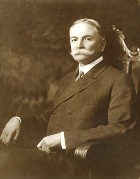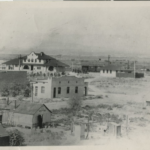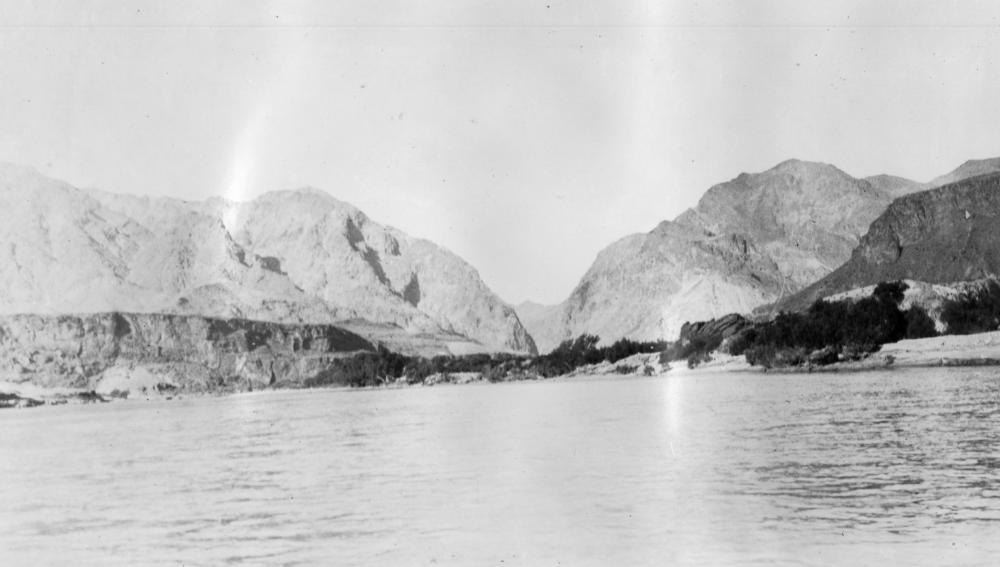By Eric Kuhn and John Fleck
The Colorado Commissions’ 8th Meeting
Wednesday, March 15th, 1922, Phoenix, Arizona
After a six-week break from the disappointing series of negotiating meetings that ended on January 31st in Washington, D.C., the commissioners from the seven U.S. Colorado River Basin states and the federal government reconvened for the group’s 8th meeting on March 15th, in Phoenix, Arizona at the Federal Building. The commission’s goal for the Phoenix meeting was not to return to the stalled negotiations. Instead, at Hoover’s recommendation, the commissioners and their advisors planned to visit the Colorado River Basin to learn about the basin, hold a series of public meetings, and tour the proposed Boulder Canyon Dam site and the Imperial Valley.
Learning about the basin
One might think that all the commissioners were experts on the Colorado River Basin, but the reality was that only one of the commissioners, Arizona’s Norviel, lived and worked in the basin. The remainder were highly skilled professionals, but their knowledge of the Colorado River Basin was primarily limited to the states they represented. The Colorado River Basin of the early 1920s was a vast expanse of primarily rural Native American and settler communities. There were few improved roads. Transportation was primarily by railroad, and even that was limited to a few east-west corridors. Communication was by telegraph and mail. While residential electric and telephone services were being rapidly installed in the larger urban centers adjacent to the basin, like Denver and Salt Lake City, and a few of the larger communities within the basin, like Phoenix, it would be decades before these basic services were commonly available for most of the basin.
Mining and agriculture were the primary drivers of the basin’s economy. Of the two, agriculture was much more stable. Arthur Powell Davis’ Reclamation Service was already a major development force. The Service brought with it the federal government’s financial and technical resources necessary to build large scale projects that the local communities could not hope to build with their own resources. These projects, like the Yuma and Salt River Projects in Arizona and the Uncompahgre and Grand Valley Projects in Western Colorado, provided reliable water supplies to irrigate hundreds of thousands of acres of mostly desert lands. The projects also brought new problems to the basin. Their success led to a desire by communities and promoters throughout the basin for Reclamation to build more. Further, the existing and proposed projects were large enough to have a major impact on the flow of the river. Without a compact among basin states, legal and political conflicts over which projects got the river’s waters and federal dollars were guaranteed.
First stop: Phoenix
The commissioners’ first stop was Phoenix. Today it is the 5th largest city in the United States with a population of 1.61 million – 4.5 million if you include the greater Phoenix metro area of Maricopa County. In 1920 Phoenix’s population was just 48,000 – 90,000 in Maricopa County as a whole. In 1922, Phoenix’s Valley of the Sun was dominated by irrigated agriculture. Today, while many are surprised at the scope of the region’s remaining agriculture, irrigated acreage has long been in decline, with much of that farming replaced by a sprawling metropolis.
The commission held four public hearing sessions and a business meeting where it discussed logistics and a letter from the Federal Power Commission requesting guidance on how to proceed with an application by a private individual to build a power dam at Diamond Creek in what is now the Grand Canyon. That proposed power plant – the Girand Project – highlighted the frictions within the basin. The project, which had been pending before the Power Commission for several years, had broad support from Arizona’s mining community and political leaders but was opposed by the other states and Davis. The upper river states were opposed because it could create a legal call on the river impacting upstream development. Davis and California were opposed because it could interfere with the development of the Boulder Canyon Project. The commission failed to reach a consensus on a response.
The commission held four lively public in Phoenix meetings over three days. Among the presenters were two strong-willed individuals who would have a major impact on the river’s future: irrigation promoter George Maxwell and Los Angeles Water and Power boss William Mulholland.
Maxwell’s Arizona vision

George Maxwell, picture courtesy Arizona State Library
Maxwell was promoting what was referred to as the Arizona Highline Canal, a project that would divert large amounts of water (perhaps 8 million acre-feet per year) from the river in the Western Grand Canyon, then convey it through 450 miles of pumping plants, tunnels, and canals to Central Arizona where it would irrigate 2.5 million acres of new lands. Maxwell sparred with Davis and the commission members, most of whom considered his project unfeasible. Maxwell feared that the commission would agree to a compact that would leave Arizona with too little water. Further, he opposed the construction of a large storage reservoir at Boulder Canyon. Instead, he supported a large reservoir in Glen Canyon coupled with a power/diversion dam near Diamond Creek and a flood control reservoir at Bullhead (now Davis Dam). Although Maxwell had little success in influencing the compact negotiators, his dream to move water from the mainstem to Central Arizona ultimately became today’s Central Arizona Project.
Mulholland’s California head fake
Mulholland, architect of the 220-mile-long Los Angeles Aqueduct, which moves water from the eastern Sierras to Los Angeles, chose to meet with the commission in Arizona rather than in his native Los Angeles. In a message aimed at the Arizonans as much as the commissioners, he testified that his city was not interested in water from the river. Rather, it needed the hydroelectric power of a Boulder Canyon project and was more than willing to pay for it. It may have been a head fake. In 1924, under Mulholland’s leadership, Los Angeles formalized its plans to build a new aqueduct from the Colorado River and in 1927 he helped form the Metropolitan Water District of Southern California, the entity that built and operates the Colorado River Aqueduct. In 1931 Metropolitan and Los Angeles became the two largest purchasers of Hoover Dam power.
On to Las Vegas and Boulder Canyon

Las Vegas, NV, station in the 1920s. Photo courtesy UNLV Libraries
On Friday afternoon, March 17th, the Colorado River Commission members, and their advisors packed their bags for an overnight trip to the small community of Las Vegas, Nevada to tour the Boulder Canyon Project site. Today the Las Vegas area has a population of 2.3 million. In 1922, with a population of only 2,300, it was so small that Nevada’s Commissioner Scrugham didn’t believe it was necessary for the commission to hold a public hearing.
On Saturday, March 18th, the commission toured the Boulder and Black Canyon dam sites, then set off on another overnight journey to see the Imperial Valley.


John:
Take a look at Irrigation Works by Arthur Powell Davis, John Wiley and Sons, Inc. New York, 1917. It is his description of every project he was involved with up to 1917. Maybe you are already aware of this book. I have two First Editions of it but it reprints of it are available on http://www.abebooks.com
Bill